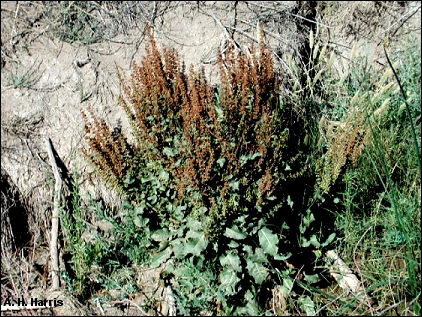

Some of you may have eaten pancakes made with buckwheat, a member of the family of that name. Little known, however, is that other members of the family also commonly have been used for food or medicine.
One such group of plants includes the docks, sorrels, and Canaigre. Their rusty-reddish fruit stalks are common late-spring sights in the Chihuahuan Desert, rising above clusters of green leaves. The plants usually are most plentiful in areas receiving a bit of extra water, such as along irrigation and drainage ditches or where paved roads direct water onto the shoulders.
Leaves are eaten raw, especially when young and tender, or used as potherbs. Seeds also are eaten, sometimes after being ground into a meal. One species, Canaigre, has been used as food as a folk medicine for alcoholism, arthritis, diarrhea, and sore throats, and as a source of chemicals used to tan hides.
As the old ways disappear under the onslaught of commercialism, we are
left to wonder what we are missing.

Listen to the Audio (mp3 format) as recorded by KTEP, Public Radio for the Southwest.
Contributor: Arthur H. Harris, Laboratory for Environmental Biology, Centennial Museum, University of Texas at El Paso.
Desert Diary is a joint production of the Centennial Museum and KTEP National Public Radio, University of Texas at El Paso.

Dock (Rumex sp.) growing along a drainage ditch in the Rio Grande Valley, Socorro, TX. Photograph by A.H. Harris.